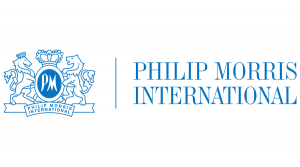How to measure the efficacy of your channels
Organgefiery’s Mike Kuczkowski shares how his team worked with a client to quantify the success of various communications channels for messages to employees.

In 2007, one of my clients came to us with a specific request: His management team wanted a channel assessment with an investment plan for internal communications.
Typically, we had approached communications from a content-centric perspective, viewing the message as the primary means by which to improve employee engagement. None of our colleagues had done anything quite like this before, either. So, we put our thinking caps on.
Our first step was to answer a basic question: What is a channel? We leveraged a construct from Claude Shannon, the “father of information theory,” which I had encountered in a class at Syracuse University while studying for my master’s degree. His model of communications includes a source, a transmitter, a message, a channel, noise, a receiver and a destination. Based on this, we isolated the attributes of a channel such as speed, ability to target, accessibility, ability to archive and point to multi-point capabilities. This helped us evaluate both individual channels and a mix of all the channels as a system.
We also needed to know how the channels were performing. We took a mixed-mode research approach: focus groups to understand what issues mattered most, stakeholder interviews to characterize the user experience, and a survey of more than 400 members of the field force to quantify it.
The findings were tough to receive:
- There was a lack of norms, governance and strategic planning, which led to confusion. Receivers didn’t know what to expect or where to look for information. Senders didn’t know what channels to use to get the results they needed.
- There was an “epidemic” of information overload, and important stuff was getting lost along the way.
- There was limited dialogue, as “push” communications were the norm.
- There were gaps in access. Senders (often at headquarters) used desktops during the workday and relied on email, while people in the field used cell phones and laptops, often after-hours and relied on voicemail.
Additionally, we still needed to evaluate content. In our field force survey, we found people highly valued two types of information: strategic insight about the company, and their individual performance metrics. But employees weren’t getting that. There was a huge gap between what people valued most and how satisfied they were with these types of communications.
Our final report quantified that gap and showed a clear picture of what was working, what wasn’t and what to do about it. Our client’s meeting with management was a success. Over the next two years, we helped him build an outstanding internal communications function with a strong team, well-curated content and strong norms and governance.
This project took us into unknown territory. We had to create a new approach and learn throughout the process. We built our approach step by step via in-depth research and collaboration with the client. By bringing curiosity and rigor to the task, and saying yes to a challenge, we were able to create something that helped improve a whole division’s experience with communications.
Mike Kuczkowski is founder and CEO of Orangefiery and is a trustee of the Institute for Public Relations.






